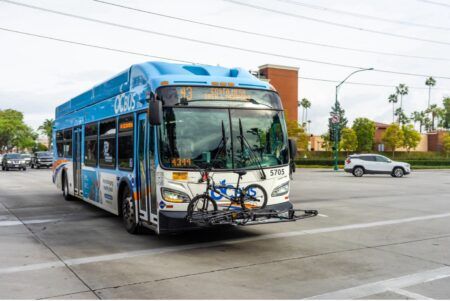A new federally funded US$6.4m grant will improve traffic flow, reduce vehicle emissions, and enhance the transit experience in Tennessee’s third largest city, Knoxville, by combining the new Accelerated Bus Corridor (ABC) project with an advanced traffic management system (ATMS).
Knoxville Mayor Madeline Rogero announced the new federal grant for the ABC project, which will be managed by the City and the Tennessee Department of Transportation (TDOT), and is part of the federal Congestion Mitigation and Air Quality Improvement Program (CMAQ). The ABC project will complement the city’s ongoing US$9m investment in an ATMS, which is installing ‘smart’ interconnected traffic control signals along the city’s main corridors of Broadway, Chapman Highway and Kingston Pike. The automated system will analyze where cars are backing up and make second-by-second adjustments in the timing of the signals to best optimize traffic flow. More than US$2m of that investment will be made along the ABC route along North Broadway between downtown and Fountain City.
The Accelerated Bus Corridor project will dovetail with the ATMS technology on Broadway by tracking Knoxville Area Transit (KAT) buses, coordinating their movements with other motorists in real time, and synchronizing signals to allow the buses to stay on schedule.
The three-year ABC project focuses heavily on improving transit commute times, but it will also fund better pedestrian access to key KAT stop locations, new bus shelters, and LED panels showing precise information about when buses will arrive, including the arrival times at destinations using connecting routes.
The ABC project will be a three-year effort, with implementation tentatively scheduled to be completed in late 2019. The first two years will be dedicated to gathering public input, identifying and purchasing right-of-ways to be used, and designing the final plans.
“The transit upgrades will help all commuters, those riding a KAT bus, as well as those driving personal vehicles,” explained Jeff Branham, the city’s chief traffic engineer. “As part of the ABC project, some KAT stops will feature pull-off lanes for the buses, so they won’t block a lane of traffic while passengers get on or off a stopped bus. Those buses then will get a short green light to re-enter the driving lane. The time allocated to the short green light for the buses’ re-entry will be more than offset in time saved by freeing up driving lanes, and allowing motorists, as well as the buses, to clear signaled intersections more quickly.”
Branham continued, “The city is laying the groundwork for these ABC transit improvements by first installing the ATMS infrastructure. It’s a very exciting combination. This technology will analyze traffic flow and use algorithms to compensate for delays, operating in real time, or second by second, as opposed to our current hour-by-hour system. The technology will be able to ‘see’ the buses and extend a green light to push them through. In other words, you’ll be spending less time waiting behind a bus.”




